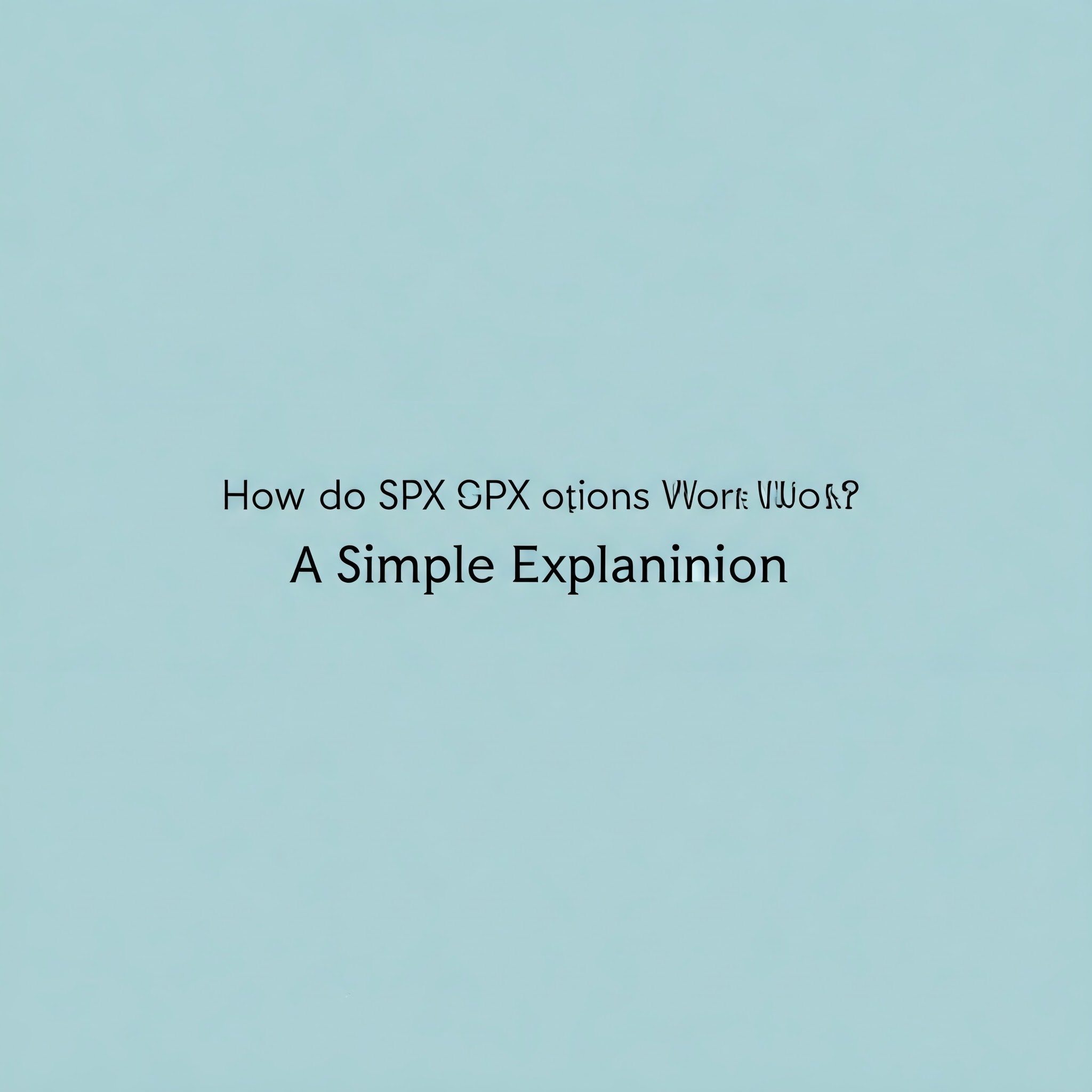Introduction
Options trading is a versatile and powerful tool for investors and traders, but not all options are created equal. SPX options, which are based on the S&P 500 Index, have unique characteristics that set them apart from other types of options, such as stock options, ETF options, and futures options. Understanding these differences is crucial for making informed trading decisions. In this article, we’ll explore the key differences between SPX options and other options, helping you determine which type of option is best suited for your trading goals.
What Are SPX Options?
SPX options are financial derivatives based on the S&P 500 Index, a benchmark index representing the performance of 500 of the largest U.S. companies. They are cash-settled, European-style options, meaning they can only be exercised at expiration and are settled in cash rather than physical delivery of the underlying asset.
What Are Other Types of Options?
Other common types of options include:
- Stock Options: Options based on individual company stocks.
- ETF Options: Options based on exchange-traded funds (ETFs).
- Futures Options: Options based on futures contracts.
- Index Options: Options based on other market indices (e.g., Nasdaq-100, Dow Jones).
Key Differences Between SPX Options and Other Options
1. Underlying Asset
- SPX Options: Based on the S&P 500 Index, providing exposure to a broad market index.
- Stock Options: Based on individual company stocks, offering exposure to a single company.
- ETF Options: Based on ETFs, which may track indices, sectors, or commodities.
- Futures Options: Based on futures contracts, which are agreements to buy or sell an asset at a future date.
2. Settlement Style
- SPX Options: European-style, meaning they can only be exercised at expiration.
- Stock Options: Typically American-style, meaning they can be exercised at any time before expiration.
- ETF Options: Usually American-style.
- Futures Options: Can be either American or European-style, depending on the contract.
3. Settlement Method
- SPX Options: Cash-settled, meaning no physical delivery of the underlying asset occurs.
- Stock Options: Physically settled, meaning the underlying stock is delivered if the option is exercised.
- ETF Options: Physically settled.
- Futures Options: Physically settled or cash-settled, depending on the contract.
4. Market Exposure
- SPX Options: Provide exposure to the entire S&P 500 Index, offering diversification across multiple sectors.
- Stock Options: Provide exposure to a single company, making them more susceptible to company-specific risks.
- ETF Options: Provide exposure to a specific sector, index, or commodity, depending on the ETF.
- Futures Options: Provide exposure to commodities, currencies, or financial instruments.
5. Liquidity
- SPX Options: Highly liquid due to the popularity of the S&P 500 Index.
- Stock Options: Liquidity varies depending on the stock.
- ETF Options: Generally liquid, especially for popular ETFs.
- Futures Options: Liquidity varies depending on the underlying futures contract.
6. Trading Hours
- SPX Options: Traded nearly 24 hours a day during weekdays, offering extended trading opportunities.
- Stock Options: Traded during regular market hours (9:30 AM to 4:00 PM EST).
- ETF Options: Traded during regular market hours.
- Futures Options: Traded nearly 24 hours a day, depending on the futures contract.
7. Tax Treatment
- SPX Options: Eligible for favorable tax treatment under Section 1256 of the U.S. tax code, with 60% of gains taxed as long-term capital gains and 40% as short-term capital gains.
- Stock Options: Taxed as short-term or long-term capital gains, depending on the holding period.
- ETF Options: Taxed similarly to stock options.
- Futures Options: Eligible for Section 1256 tax treatment.
Advantages of SPX Options
- Diversification: Exposure to a broad market index reduces company-specific risks.
- Cash Settlement: No need to handle physical delivery of the underlying asset.
- Extended Trading Hours: Nearly 24-hour trading allows for greater flexibility.
- Tax Benefits: Favorable tax treatment under Section 1256.
- High Liquidity: Easier to enter and exit positions.
Advantages of Other Options
- Stock Options: Ideal for traders focused on individual companies.
- ETF Options: Provide exposure to specific sectors or themes.
- Futures Options: Suitable for traders interested in commodities or currencies.
- Flexibility: American-style options can be exercised at any time before expiration.
When to Use SPX Options vs. Other Options
- Use SPX Options: If you want broad market exposure, prefer cash settlement, or want to take advantage of extended trading hours and tax benefits.
- Use Stock Options: If you’re focused on trading individual companies or want the flexibility of American-style options.
- Use ETF Options: If you want exposure to specific sectors, indices, or commodities.
- Use Futures Options: If you’re interested in trading commodities, currencies, or financial instruments.
Conclusion
SPX options and other types of options each have their unique features, advantages, and use cases. SPX options stand out for their broad market exposure, cash settlement, and favorable tax treatment, making them an excellent choice for traders looking to trade the S&P 500 Index. On the other hand, stock options, ETF options, and futures options offer flexibility and exposure to specific assets or sectors.
Understanding the differences between these options is essential for choosing the right instrument for your trading strategy. Whether you’re a beginner or an experienced trader, carefully consider your goals, risk tolerance, and market outlook before deciding which type of option to trade.
How to Start Trading SPX Options: A Step-by-Step Guide
What Are SPX Options? A Comprehensive Guide for Beginners
Key Terms in SPX Options You Need to Know: A Beginner’s Guide




